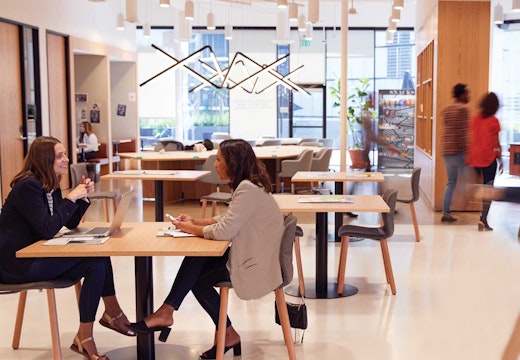What’s the difference between hybrid and flexible work?
As hybrid and flexible working rise in popularity, what do these terms really mean and how do organisations decide which working practice is right for their business?
Hybrid and flexible working are terms which are often used interchangeably across the workplace sector. The two terms have caused confusion around what kind of new working model organisations are deploying. The situation is so fluid that there is a lack of clarity to how different types of work are described and what they really mean.
There is a clear distinction between hybrid work and flexible work that has been misunderstood or overlooked by some companies. Some find themselves saying that they’re deploying flexible work when, in reality, it’s a hybrid model, and vice versa.
The experiences that employees will get across the two models are so different. The two scenarios of both a hybrid worker and flexible worker are outlined below to highlight the stark differences between the two worker experiences.
The average hybrid employee
The hybrid employee has, like most office workers, had to work remotely during the pandemic. As it became safe to do so, their employer announced that a new work model would be implemented, in order to bring the workforce partially back into the office.
Their team was told that it should come back into the office three days a week: Mondays, Wednesdays and Fridays. They were to work from home on Tuesdays and Thursday. This allowed the employee to reduce their commuting burden and save on transport costs, but it wasn’t without its difficulties.
The employee’s partner, who worked at a different company, was also given a hybrid model, and was told to work from the office on Mondays, Tuesdays, and Wednesdays. This created a clash on Thursdays, where both were expected to work from home. The couple lived in small, rented accommodation and had worked (with significant stress and difficulty) from their kitchen table during the worst of the pandemic. Both take numerous video calls in the course of their jobs, and this led to clashes every Thursday when they were on calls at the same time.
Because of this, the employee asked their manager if they could alter the days they work from the office. But because the whole team was fixed to the same schedule, and moving one employee would make collaboration more difficult, the request was declined.
The average flexible worker
The flexible employee started off in a similar situation to the hybrid worker during the pandemic: working remotely and waiting for their employer to implement a return-to-work policy.
But when this happened, it was somewhat different: each employee was to be given completely free choice of where they wanted to work and when. On the days that they needed or wanted to work from the office, a workspace booking system was provided so that they could book all the workstations, meeting rooms, parking spaces and other resources they needed in advance.
The result was that the flexible employee was able to fit working arrangements around what was required from their job such as only travelling into the office when required for in-person collaboration. The flexible employee also lived in small, rented accommodation, leading to the potential for clashes with a flexibly working partner. But on the days where these clashes would arise, the flexible employee could simply find a workstation in a quiet corner of the office and reserve it for the full day, so they could be sure they could work productively in peace.
Things to consider
Of course, every business and employee is different, and the two hypothetical cases above are one of infinite possibilities. But they demonstrate an important point: hybrid work may please some employees but may just as easily please none of them. Flexible work is far more likely to please everyone, and that’s for three main reasons:
- Control: individual employees take charge of the decisions around when and where they work, limited only by the reasonable operational constraints of the business
- Choice: employees aren’t compelled to work from home or from the office on specific days, and can vary their schedule day-by-day, and week-by-week, as they see fit or as their job requires
- Compromise: employees aren’t held back in fitting their work around their personal lives and are similarly free to collaborate with co-workers in person, through video calls or a combination of the two.
To learn about how flexible work is the real answer to today’s challenges in the world of work, download this free eBook from Condeco today.








